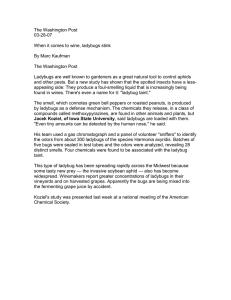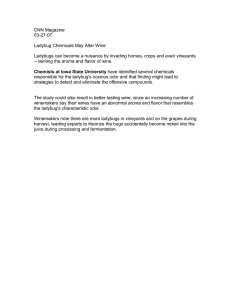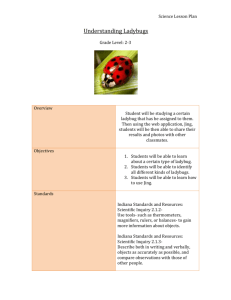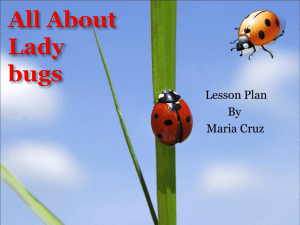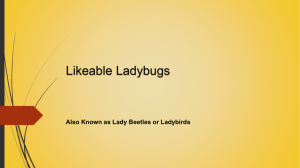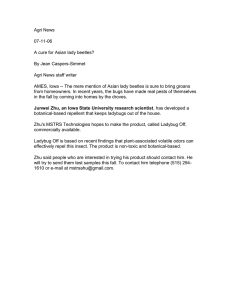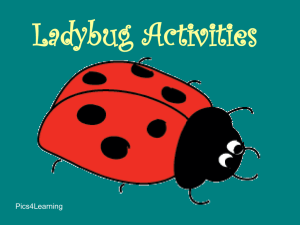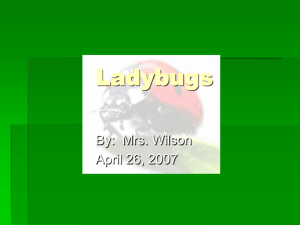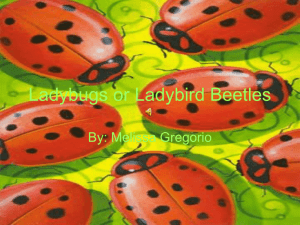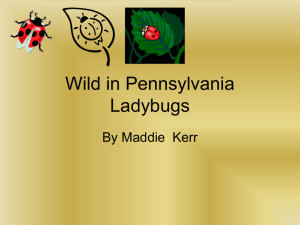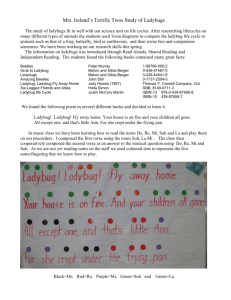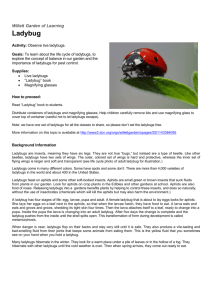Lady Bugs
advertisement
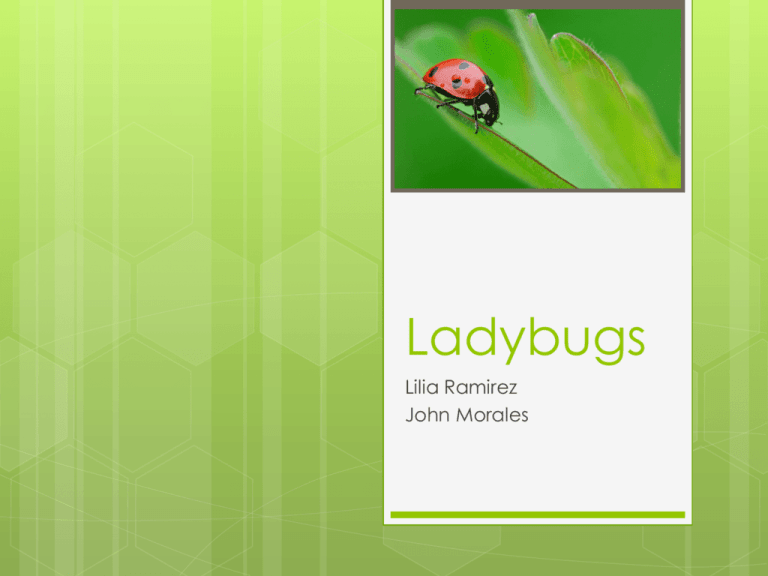
Ladybugs Lilia Ramirez John Morales Benefits of Ladybugs Ladybugs, also known as ladybirds or coccinellids, are small beetles approximately 1/4-inch in length with dark orange hard shells covered in black dots. These beetles can show up in large numbers in some areas and will occasionally attempt to move indoors to cause a nuisance in the home, but overall these are bugs you want to have around because of their benefits. Ladybugs eat aphids; one ladybug can eat up to 400 a day, several ladybugs can eat thousands. Ladybugs are a huge benefit to a garden Reduce Insect Population Ladybugs are predatory beetles that eat a large number of aphids (plant lice) and other harmful bugs. Even in the larval stage, ladybugs will normally consume hundreds of aphids and will grow into adults that may eat up to 5,000 aphids in a lifetime. This greatly reduces the population of harmful insects that will otherwise destroy your plants. Ladybug Anatomy There are eight parts to the ladybug anatomy, each with its own purpose. A ladybug is an insect, a beetle actually, and it has most of the same anatomical parts as every other insect, as well as a few parts that are distinctive to the ladybug. All ladybugs are less than ¼ inch long, oval or round shaped, and have six short legs. Ladybugs usually have very bright colors, like red or orange, and often have some sort of pattern on them, like spots. These colors and patterns are thought to warn predators of the ladybug’s bad taste and poison. Sometimes, though, the ladybug will be a solid color with no pattern at all, and can be yellow, brown, or black. The eight body parts are the head, antenna, eyes, pronotum, thorax, elytra, wings, and legs. Ladybug lifespan After a female lays her eggs, they will hatch in between three and ten days, depending on ambient temperature. The larva will live and grow for about a month before it enters the pupal stage, which lasts about 15 days. A ladybug can live from one to two years, but the life cycle, from egg to adult, is about a month. Lady's bugs live atlest through summer they go away in winter It also depends on if it gets eaten or squashed. Life cycle Eggs are tiny, spindle‐shaped, and arranged in clusters. Larvae are usually elongated, “alligator” shaped, slightly pointed at the rear, and their body is covered in tiny bristles. Pupae are slightly round and dark colored. You can find them attached to a surface by their hind ends. Adults are sphere‐shaped, smooth, and have easily recognizable colors and markings. Sources www.ladybug-life-cycle.com/ladybug- anatomy.htmlugs_live http://www.ehow.com/about_6383550_d o-ladybugs-environment_.html http://wiki.answers.com/Q/How_long_do_ ladybugs_live
